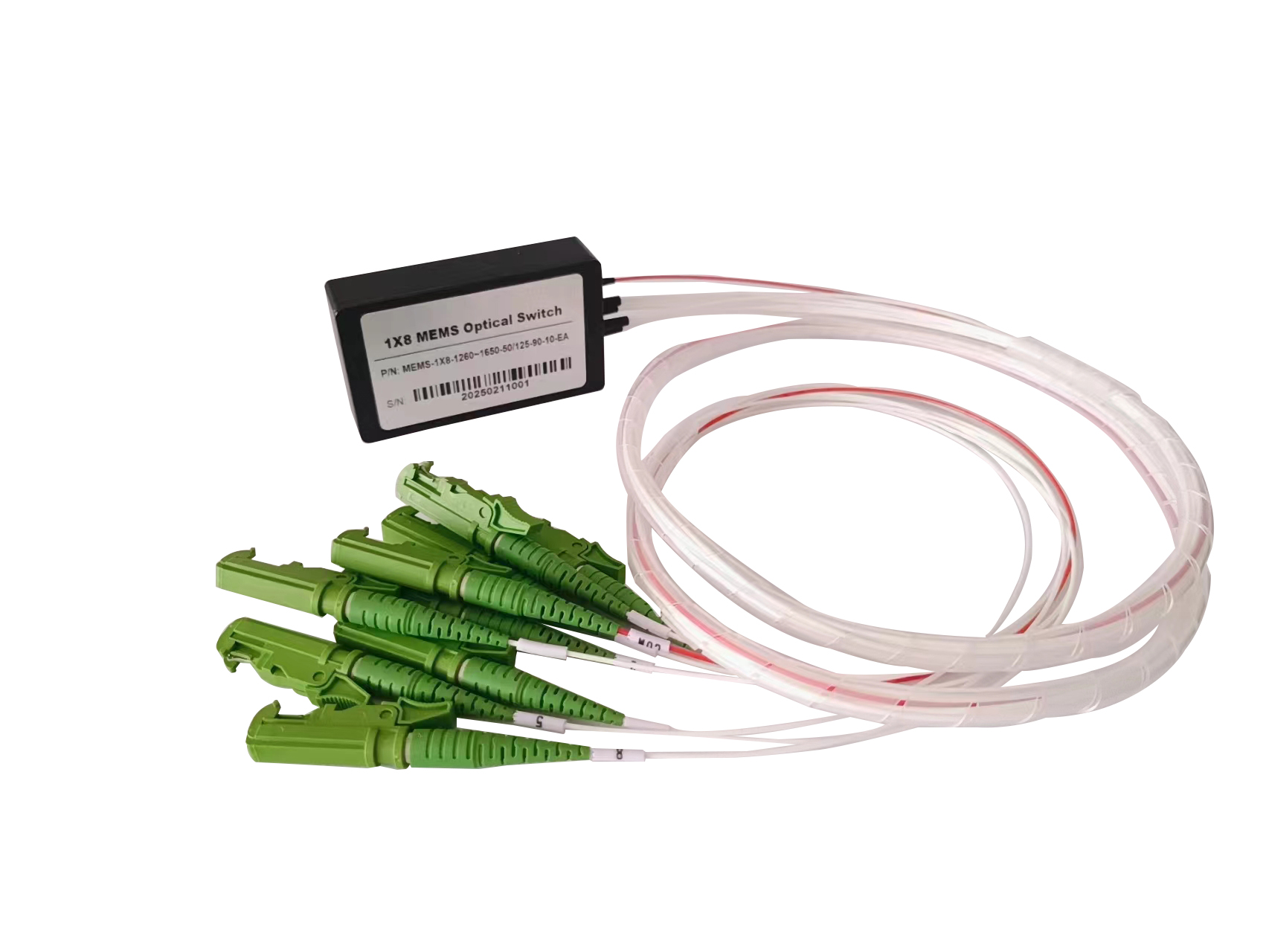what scenarios can MEMS optical switches be applied?
MEMS optical switches are based on micro-electro-mechanical systems (MEMS), and use optical micro-mirrors or optical mirror arrays to change the propagation direction of the light beam to achieve optical path switching. In what scenarios can MEMS optical switches be applied?
1. MCS (Multicast Switching Optical Switch)
The multicast switching optical switch (MCS) based on PLC technology and MEMS technology is a key component of the next-generation reconfigurable optical add-drop multiplexing system (ROADM); each functional unit consists of M independent splitters and N independent MEMS optical switches; providing N uplink (or downlink) ports to M directions of connection.
2. iODF (intelligent optical distribution)
Through the cascade integration of optical switches, it can be used for iODF (intelligent optical distribution frame) to replace the traditional distribution frame in the industry private network.
3. OXC (Optical Cross Connection)
Through the cascade integration of optical switches, it can be used for small-scale OXC to meet the needs of key lines in industry private networks and data centers.
4. Optical performance monitoring
Integrated with TOF or OPM, combined with monitoring software, through time-division multiplexing OPM, monitor the signal performance of DWDM channels in multi-core optical fibers in optical cables, which are widely used in optical transmission network cable monitoring, ROADM networks, DCI, etc.
5. Optical cable monitoring
Integrated with OTDR, combined with monitoring software, through time-division multiplexing OTDR, monitor the quality status of multi-core optical fibers in optical cables, which are widely used in PON network cable monitoring, optical transmission network cable monitoring, industry-specific network cable monitoring, etc.
6. Optical fiber sensing
The sensing market has great potential, and the main products are 1×4 and 1×8.
7. Test instruments and factory automation
The market size of test instruments and factory automation is relatively small, but the added value is high, and the optical performance of optical switches, such as insertion loss, return loss, repeatability, etc., is required.
8. DWDM system
Channel power balancing, link node power attenuation, optical receiver input protection, and optical line on-off fast control.
Notes
MEMS optical switches can be used to achieve comprehensive remote control of all-optical networks.


Comments are closed